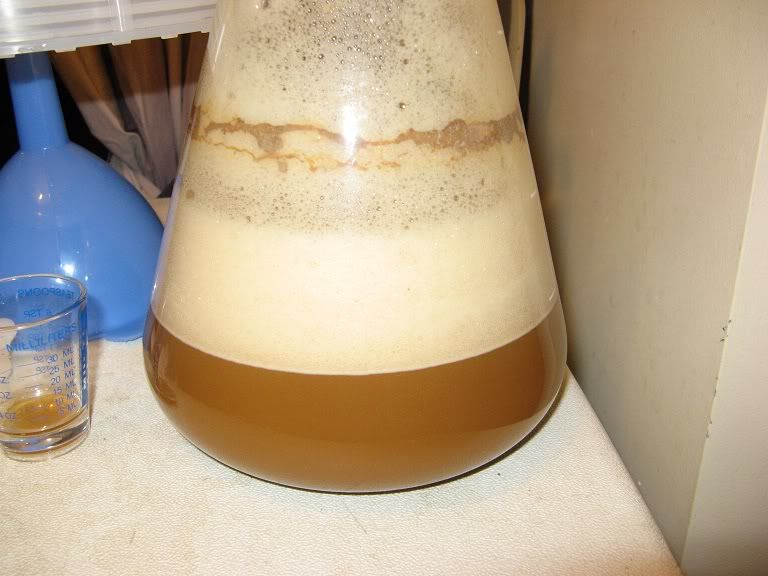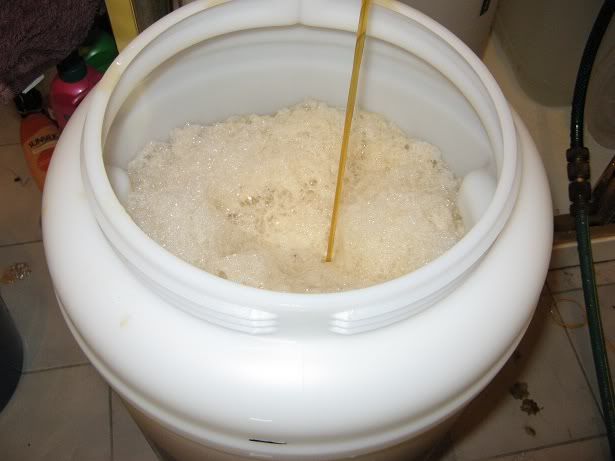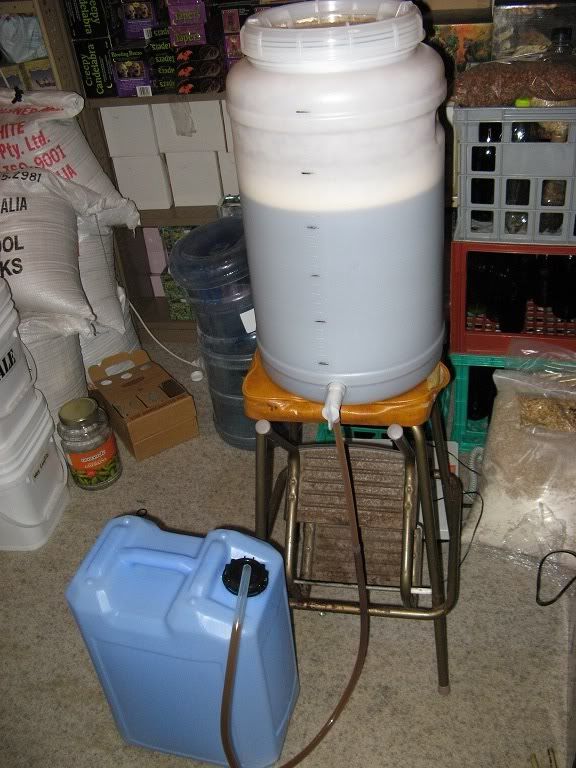Information in the 'Yeast' book suggests that I have not been providing enough oxygen in the wort to satisfy the yeast's needs.
The only aeration I've done has been to splash the wort into the fermentor and then shake it around, so most likely the O2 levels have been around 3-5ppm which is well below the 8-10ppm required.
The book also mentioned that the yeast consumes all the oxygen in the wort in the first 30mins, in "The Compleat MeadMaker" the author actually aerates after the yeast is added, which made me consider how I could provide more O2 without having the expense of using pure oxygen or the additional cleaning/sanitising/setup of using additional equipment like an air-stone and air-pump.
BribieG's 'Double Dropping' was a good step, but if the yeast use up the oxygen in the wort in the first 30mis and it takes about that to drain the kettle through the CFC and cool the wort, I figured I could put that time to better use.
By collecting an amount of cooled wort in the flask used to make the yeast-starter, I spent the 20mins it took to drain the kettle shaking the crap out of it:

While that may only ever get to around 8ppm of O2 and there is only a small amount of wort, if the yeast consume the oxygen while I add more for 20mins, it would seem logical that they'd be able to use up that O2 to make the lipids and sterols they use to reproduce.
Add the usual splash-into-fermentor, and then shake the crap out of it:

Follow that the next day with Double Dropping:

And I'll either end up with oxidized beer, or will have given the yeast an adequate supply of Oxygen in three different ways.
Given the book suggests that "Too much oxygen is rarely a problem" I'm hopeful that the yeast will be happier and the beer will be fine.
The only aeration I've done has been to splash the wort into the fermentor and then shake it around, so most likely the O2 levels have been around 3-5ppm which is well below the 8-10ppm required.
The book also mentioned that the yeast consumes all the oxygen in the wort in the first 30mins, in "The Compleat MeadMaker" the author actually aerates after the yeast is added, which made me consider how I could provide more O2 without having the expense of using pure oxygen or the additional cleaning/sanitising/setup of using additional equipment like an air-stone and air-pump.
BribieG's 'Double Dropping' was a good step, but if the yeast use up the oxygen in the wort in the first 30mis and it takes about that to drain the kettle through the CFC and cool the wort, I figured I could put that time to better use.
By collecting an amount of cooled wort in the flask used to make the yeast-starter, I spent the 20mins it took to drain the kettle shaking the crap out of it:

While that may only ever get to around 8ppm of O2 and there is only a small amount of wort, if the yeast consume the oxygen while I add more for 20mins, it would seem logical that they'd be able to use up that O2 to make the lipids and sterols they use to reproduce.
Add the usual splash-into-fermentor, and then shake the crap out of it:

Follow that the next day with Double Dropping:

And I'll either end up with oxidized beer, or will have given the yeast an adequate supply of Oxygen in three different ways.
Given the book suggests that "Too much oxygen is rarely a problem" I'm hopeful that the yeast will be happier and the beer will be fine.




